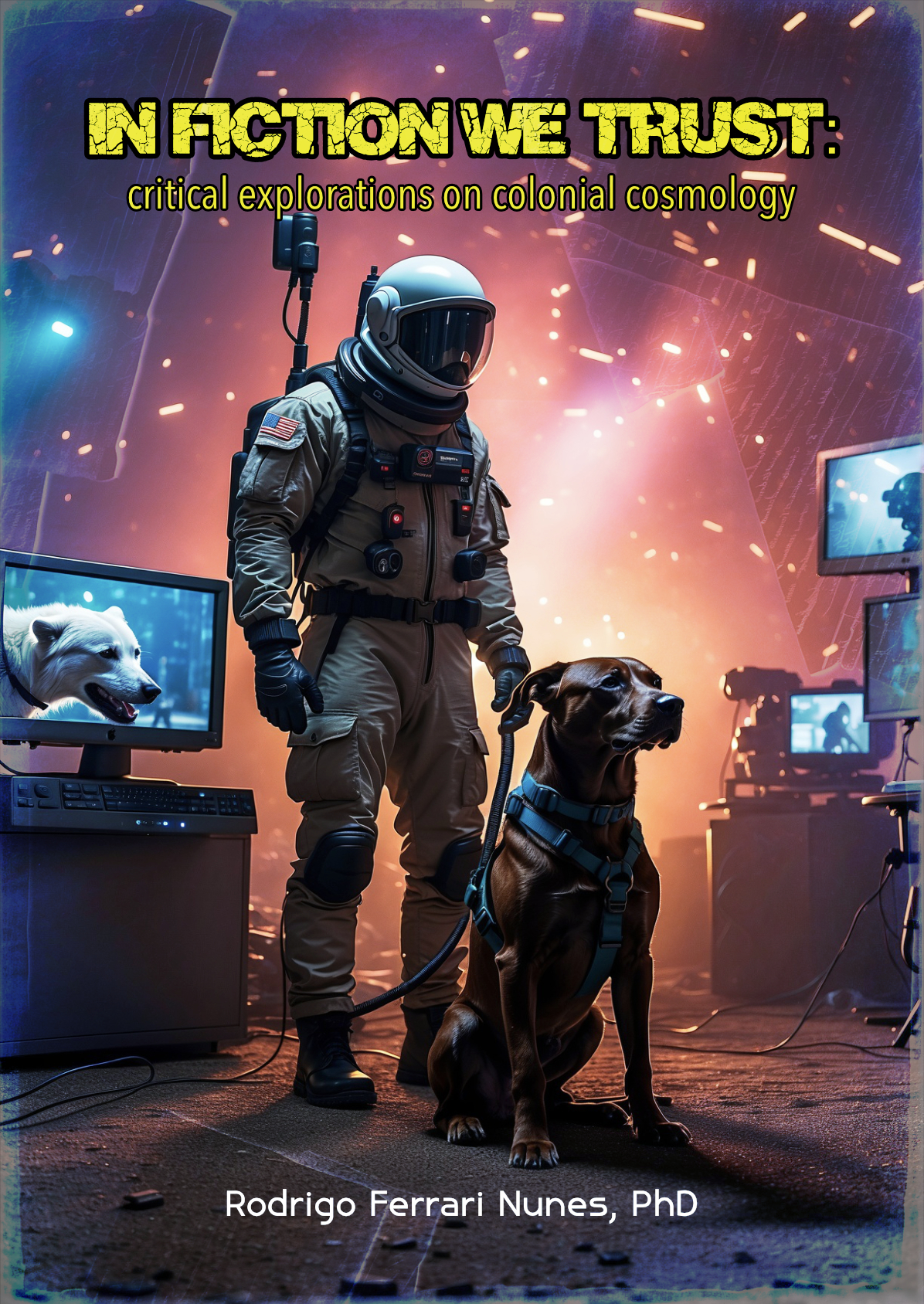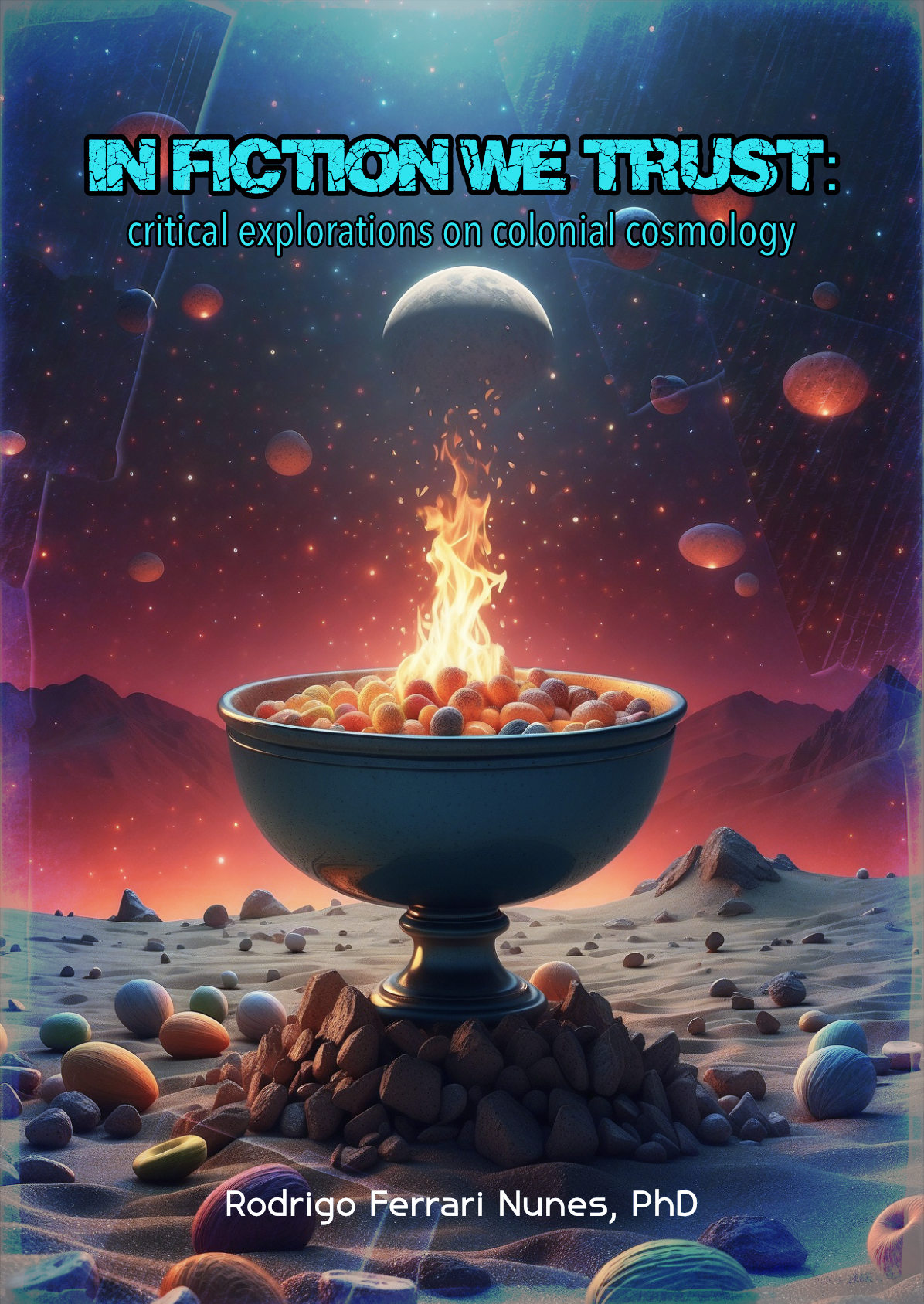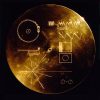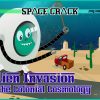
EXO-ANYTHING-GOES
Due to the constant spreading of colonial cosmological fictions, we are now seeing the rise of paradoxical specializations like exobiology. The idea is that one is somehow studying the biology of beings that are supposed to exist in other planets multiple light years away and that nobody will ever visit. These animals are imagined as fictional analogies to earthly creatures. Exobiologists just study earthly animals, often from remote and toxic places and make up just so stories about exobiological entities. It’s just like making up a fantasy world. For instance, as an exobiologist, I can claim that there is some exoplanet somewhere that is inhabited by large populations of Gorilodiles, a mix between gorillas and crocodiles.
To make my claim stronger, I can say that I was contacted by alien spirits from that exoplanet, and they told me how they live after a grueling initiation that took many years. They actually chose me to speak on their behalf to other earthlings, to help humanity to evolve. The Gorilodiles are like green King Kongs with scales and ridges over their backs, lush hair, and crocodile teeth. They are massive, the size of a Godzilla, having evolved in relation to the gravity of their planet. I have seen crocodiles and gorillas at the zoo, King Kong and Godzilla at the movies. As an exobiologist, I hold that Gorilodiles must exist. Over billions of years, this dominant exobiological species evolved. Evoking the Drake equation, I can prove that a world full of Gorilodiles must be probable — I can even provide numbers. Out of a trillion billion possible planets in the known universe, in a galaxy very far away, a long time ago, Gorilodiles lived as masters of their world. I can make up stories about how they live, describe the lives of the most important among them, provide a timeline of their exoplanet’s history, and so on, ad infinitum. If the characters are charismatic enough, and catch on, I could produce books, comics, television shows and films to celebrate them. Soon, they will be as incontestable as Spider Man or Don Pettit.
Even the current dictionary definition of exobiology betrays its speculative foundations in fantasy and make-believe, “the branch of science that deals with the possibility and likely nature of life on other planets or in space.”1 We must wonder just how possible and how likely something has to be before a whole branch of science is made up for it. Simply put, imagining what one thinks is possible and likely is just making things up.
If we apply a similar speculative formula to anthropology, we end up with an epistemology for creative fiction writing. For instance, let us propose a definition of the new space science of exoanthropology: the branch of science that deals with the possibility and likely nature of social and cultural life in other planets. The idea has already been employed in Star Trek.
In that fictional universe, alien creatures and worlds stand for different cultures and remote places. Anthropology on the Earth, however, requires the direct participation, observation, attention and involvement in social situations, conversations and other social activities; in essence, knowing a particular way of being there and proving it. Thus, the project of exoanthropology fails before it starts. To make the practice analogous to what exobiologists do, exoanthropologists would study people on Earth and make things up about fictional people in other planets. Again, this is just another definition of fantasy fiction. Yet, for exoplanet believers, this is both feasible and scientific. Yet, this turns the meaning of scientific over its head. Following the exobiology example, exoanthropologists can scour the anthropological literature, and even do fieldwork anywhere, as long as the objective is to speculate about how humans and other intelligent beings might live somewhere else in the universe. Since the universe is so vast, anything is possible. Inspired by popular multiverse mythologies, they can make up any culture, in general or in detail. Thus, these fantasies, never falsified, would become unquestionable true places for exoanthropology believers. This brief exercise demonstrates how adding of the exo- prefix to anthropology and considering the logical consequences of doing so can turn a scientific discipline into speculative fiction.
The database of exoplanets, without any actual photograph of a single one of them, should soon contain billions of entries. It provides fodder for speculation that can last billions of lifetimes. It is a deep trap, as deadly as another one of the space believers’ favorite fictions, a black hole. If you ask astronomers, what is the evidence for all these exoplanets you present, along with specific catalogue numbers and names, maps, inner cores, temperatures, daily and yearly rotations, atmospheric composition, specific gravity measures, human evolution implications, structures for habitation, and so on? The technical answers are actually made up of unproven assumptions, theories and simulations. They would say they got all this exoplanet data from how a star dims every so often. The actual data is literally a low resolution, pixelated black and white image of a white dot that fades. So how do they go from a dot on a screen to the assertion that these represent faraway planets that humans will visit or inhabit in the future? If this conclusion does not stem from the data itself, as it does not, where does it come from? All readers should know the answer by now — science fiction. The confirmation comes from the imagination. As our reading of Messeri’s work shows, astronomers are in the business of imagining significances. Paxi, an European Space Agency (ESA) cringe cartoon character that targets children with space propaganda, explains it as well as professional astronomers when he says, “believe me.”2
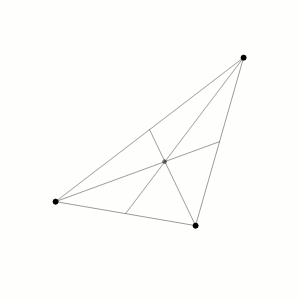 While the geniuses of astronomical sciences can’t even crack the three-body problem, we should believe they have modeled and simulated to perfection the motions of the stars and galaxies. The so-called three-body problem asks how three bodies floating in space while being mutually attracted by Newtonian gravity should move. The answer is that, given Newton’s so-called laws, three objects would always move in different ways, never in stable orbits. The point is that Newtonian physics, specially universal gravitation, does not describe or explain the order of the universe around us. In other words, it fails miserably to account for natural phenomena. Yet, even back in Newton’s time, and for centuries thereafter, the stars in the Earth’s skies were considered fixed. The planets were wandering stars that moved over the background of fixed stars.
While the geniuses of astronomical sciences can’t even crack the three-body problem, we should believe they have modeled and simulated to perfection the motions of the stars and galaxies. The so-called three-body problem asks how three bodies floating in space while being mutually attracted by Newtonian gravity should move. The answer is that, given Newton’s so-called laws, three objects would always move in different ways, never in stable orbits. The point is that Newtonian physics, specially universal gravitation, does not describe or explain the order of the universe around us. In other words, it fails miserably to account for natural phenomena. Yet, even back in Newton’s time, and for centuries thereafter, the stars in the Earth’s skies were considered fixed. The planets were wandering stars that moved over the background of fixed stars.
Parallax among the fixed stars was never observed. This does not match the assumptions of the modern colonial cosmology, which postulates an ever expanding universe. Once intelligence and space agencies realized they could use any satellite and probe story to make up a front for data, they noticed that they could fix any theory by making up the evidence for it. In the 1980s, the ESA first claimed that they had measured and observed stellar parallax with the Hipparcos probe. The claim is both unverifiable and highly questionable. Since space agencies monopolize the source of information, that is, they control all fictional satellites and probes, they can direct astronomical theory and general cosmological belief. In fact, satellites and space probes are just-so, unverifiable stories with a collection of made up datapoints in a computer simulations. This information is simply fed to a passive audience of gullible and uncritical astronomers who could not and have never questioned a single space probe or mission.
Critics and naysayers would have to make up their own probes and data. Being honest, that would never cross their minds. The result of this situation is curious — on the one hand, the space agency claims to have sent a probe to space that measured stellar parallax, while on the other hand, nobody has ever been able to make the same measurement from the Earth in thousands of years. Also, people on the Earth should give up trying to measure it. Yet, given that both the Earth with its astronomers and the space probe were never far from one another and would be all allegedly floating along each other in the vacuum of space, by which logic does measuring stellar parallax only works for the probe? In fact, if the universe were expanding, this should be visible to everyone everywhere. Stellar parallax, given the distances and motions of the colonial cosmology with its ever expanding Big-Bang model, should be observable from the Earth at any time. The observable stability of the stars is a problem that drives a wedge into the heart of the colonial cosmology, shattering it into dust.
In the interplay of experimentation and theory, verification practices that are so important for sciences that deal with actual phenomena, such as chemistry or engineering, in the case of astronomy, are just thrown out the window. They are substituted with computer simulations that illustrate theoretical and abstract mathematics in virtual, artificial environments. Astronomers select formulae that better fit their assumptions, and make up new ones to come up with grandiose proclamations about the nature of the universe. For those who accept the legitimacy of such an enterprise, their words have the power of law. But again, just a few questions suffice to raise serious doubts about the assumptions of exoplanet believers and the alleged evidence for them.
Imagine you just opened an astronomy textbook on the quasar page by chance. You notice how distances are so important for astronomers. They are like dates to paleontologists, based on mathematical models and assumptions. They want you to think that they have modern, infallible methods for detecting distances and motions that should make you feel like a speck of dust hovering over the ocean, but in the endless vacuum of space. But with what magical device have they measured all this, and the ever expanding infinity? Do assumptions, calibrations, and simulations measure any real phenomena?
The typical exoplanet believer, inspired by science fiction stories, enjoys imagining how it would feel like to jump from planet to planet by hyperdrive and to contemplate galactic panoramas. For them, the infinite universe should be filled up and inhabited with endless stories. How many millions of light years away is that quasar? What, billions of light years away? How far is that? How does the light get here without losing strength with such a distance and given all the motions of the universe? In fact, none of this matters. Even if every unanswered question demolishes their model, believers will latch on to whatever physics may resemble and support their favorite science fiction cosmology. They can rely on the expansive premises of the suggestion: a long time ago, in a galaxy far, far away. They are thus transported to their favorite fictional world, reclining in a cinema chair in the back of their minds, and immersing themselves in fiction.
1 Oxford Dictionary of English, Third Edition, 2010, p. 613.
2 All Paxi videos, in multiple languages, are available at the European Space Agency’s YouTube channel: https://www.youtube.com/@EuropeanSpaceAgency/playlists?view=50&sort=dd&shelf_id=9.



